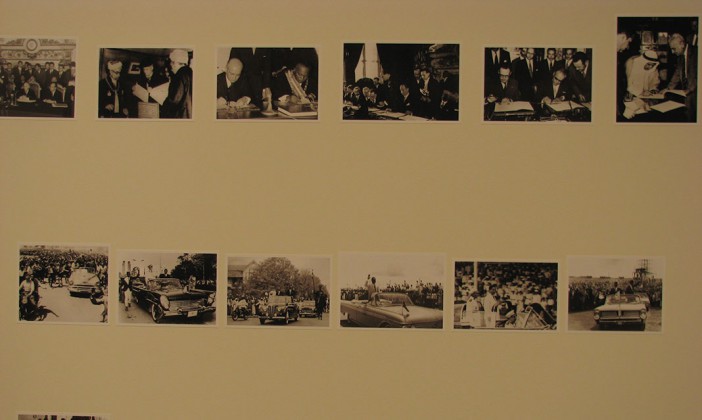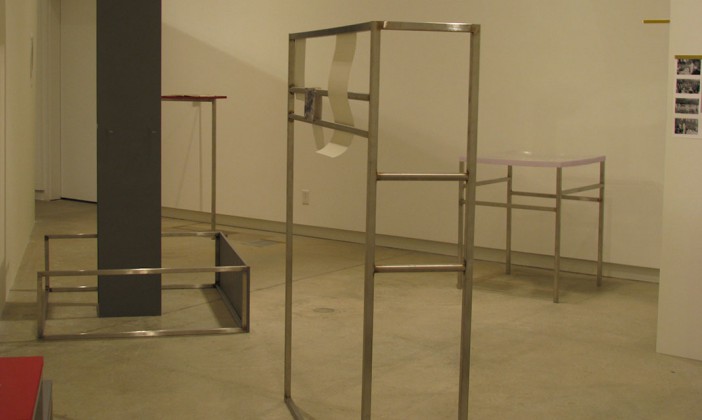Street riots. Revolutions. Parades. New flags. Independence.
Maryam Jafri’s exhibit The Day After offers a comparative perspective of the decolonial moment in history, marking a period when 150 new nations appeared in 30 years.
The Blackwood Gallery’s walls have been painted white for the exhibit. Jafri’s installation, Independence Day 1934-1975, is a large white wall that stands in the middle of the space. Images of riots and parades cluster together in non-chronological order on the wall. Jafri has placed photos of various countries’ independence moments in a broken grid that offers viewers a black and white patchwork storyboard, documenting the moment when colonies in Africa, Asia, and the Middle East gained their independence.
Not all the spaces in the grid have been filled. Jafri says she wanted to leave some blank spots because not all countries are represented. The broken grid also represents how fragile the new nations are after they gain their independence.
In 2009, Jafri began the ongoing project of gathering the photographs. Her visual archive continues to grow as Jafri visits various countries and collaborates with native historians and journalists. Independence Day 1934-1975 displays some of the 500 photographs she has collected, which Jafri plans to make into an artist book.
“Even though these are public images, sometimes when you go to the archives, [archivists] get suspicious because they’re used to dealing with journalists or academics,” she says about the challenges she experienced in gathering the images. “People have old-fashioned ideas about what artists are. They’re still used to artists doing painting and sculpture and they’re like, ‘Why aren’t you in your studio?’ It can be a pain.”
Behind the white wall, visitors can see modules that reflect Jafri’s research process. Minimal, light metal structures display books, photocopies of newspapers, and declarations of rights. The backstage area strikes a balance between providing digestible information and showing the richness and complexity of the research.
“[The modules] are in between information and artwork; they are blurring the lines,” Jafri said.
Additionally, the e|gallery, located in CCT, will host movie screenings and round tables as part of the exhibit.
The January 27 screening will include director Goran Olsso’s 2014 documentary, Concerning Violence, and director Ousmane Sembene’s ground-breaking 1965 film, La Noire De.
The February 3 screening, to be introduced by the Erindale Campus African Students Association, will feature a variety of shorts. On February 10 and March 2, the e|gallery will host roundtables to encourage discussion of the topics presented in Jafri’s The Day After.
The first roundtable discussion, entitled “Decolonizing the Archive”, will feature Jennifer Bajorek, assistant professor of comparative literature, Hampshire College, Amherst, Massachusetts; artist Sameer Farooq; John Greyson, filmmaker, associate professor, York University; Julie MacArthur; and Leila Pourtavaf, writer, curator, and doctoral candidate in the Department of Historical Studies at U of T.
The second roundtable, entitled “Images in Dependences”, will discuss how history is framed by its representations.
The Day After will run at the Blackwood Gallery until March 6.






